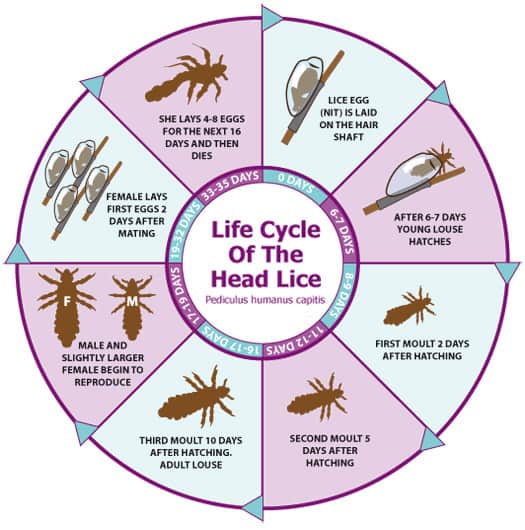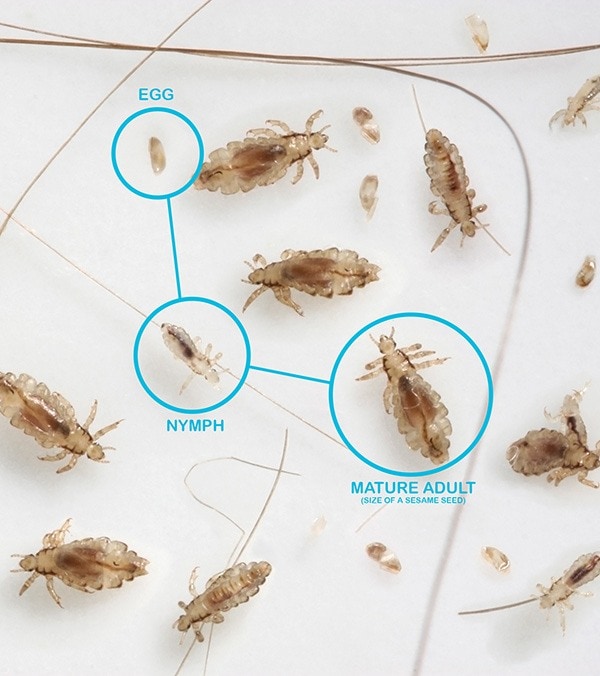Head Lice Facts

There is a lot of confusion about head lice. Don't worry, they don't jump, fly, or swim! Head lice can be bothersome, but they are not dangerous to your health. Below is some information to assist you in understanding the REAL facts of lice.
DO'S
DO NOT'S
WHO'S AT RISK?
LIFE CYCLE

Nits (Lice Eggs)
Nits are head lice eggs. They are hard to see and are often confused for dandruff or hair spray droplets. Nits may be found at the base of the hair shaft nearest the scalp. They are 0.8 mm by 0.3 mm, oval and usually brownish in color. Nits take about 1 week to hatch (range 6 to 9 days).
Nymphs
The egg hatches to release a nymph. The nymph looks like an adult head louse but is about the size of a pinhead. Nymphs mature after three molts and become adults about 7 days after hatching.
Adults
The adult louse is about the size of a sesame seed, has 6 legs (each with claws, yikes!!)- and is tan to grayish-white . In persons with dark hair, the adult louse will appear darker. The females can lay up to 8 nits per day. Adult lice can live up to 30 days (about 4 and a half weeks) on a person's head. To live, adult lice need to feed on blood several times daily. Without blood meals, the louse will die within 1 to 2 days off the human host.

Homecare Process
Relax, you do not need to dissect your home and clean every crevasse. Gone are the days of bagging up everything you own and hiding it away in the basement for weeks. We will walk you through a much simpler home care process. After all... WE MAKE LICE EASY!

